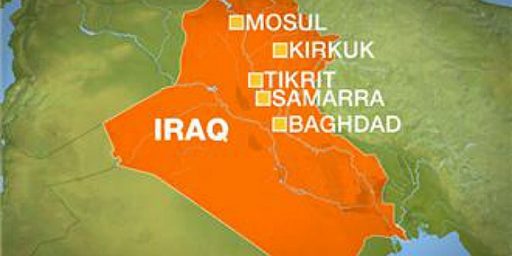Stryker an Early Success
Army Times: Stryker Brigade draws praise for Iraq work
Most know the soldiers from 3rd Brigade, 2nd Infantry Division (SBCT) as the Army’s first Stryker Brigade Combat Team. But in some parts of Iraq, they’re known as the “Ghost Soldiers.â€
That’s what came out of reporters round-table meeting at the Pentagon Monday, where Army acquisitions officials praised the performance of the first Stryker brigade in Iraq.“The 3rd Brigade, 2nd Infantry Division is performing extremely effectively in combat in Iraq. The SBCT has effectively used speed and situational understanding to kill and capture dozens of enemy fighters, said Col. Nick Justice, acting assistant deputy for acquisition and systems management for the Assistant Secretary of the Army for Acquisitions, Logistics and Technology.
Most of the meeting dealt with the Army̢۪s plan for fielding five additional Stryker brigades.
But officials pointed out that the senior leadership is pleased with the Fort Lewis, Wash.-based 3-2̢۪s ability to launch its infantry forces on short notice into areas such as Samarra in December during a combined operation with the 4th Infantry Division to clean out former regime loyalists and other troublemakers.
This assessment echoes a StrategyPage report from over the weekend:
After four months in Iraq, the Stryker brigade up in Mosul lost its first Stryker armored vehicle to an RPG attack on March 28th. Two RPGs were fired at the vehicle and one got past the Slat Armor. The vehicle caught fire and was destroyed. None of the crew were hurt. Only the driver was aboard, and he got out. The rest of the crew (an infantry squad) were on foot patrol at the time. About half a dozen RPG rounds have previously been fired at the brigades 309 Strykers so far, most only causing minor damage. Two Strykers were damaged when hit by a roadside bomb. Only one soldier was injured. Three Stryker crewmen were killed, back in December, when a Stryker rolled over when part of the dirt embankment underneath it collapsed.
The troops like the Stryker, mainly because it’s faster than the M-2 Bradley tracked armored infantry vehicle that many of the troops had used earlier in their careers. The Stryker has a smoother ride and it is quiet. This has proved to be a significant advantage when going on raids, or just patrolling. The road wheels and metal pads of a tracked armored vehicle make a lot more noise. The Iraqis are unnerved by silent Strykers sneaking up on them.
Being a new combat vehicle, the Stryker has come under a lot of criticism. But so far, the troops using it are enthusiastic. That is also largely due to the fact that the Stryker is a new vehicle and has a lot of new stuff in it. The vehicle has a .50 caliber (12.7mm) machine-gun that can be fired from inside the vehicle via an automated mechanism and video cameras on the outside of the vehicle. The driver also has a video camera, which provides the driver with more protection (although a narrower view of what’s up ahead) when the vehicle is under fire, or in hazardous country.
The Strykers are also equipped with the new FBCB2 “battlefield Internet.” This means each vehicle has a computer, and is linked to all the other via satellite. This gives unit commanders a much better sense of where everyone is, especially at night. This stuff, in a less complete form, was used during the 2003 march on Baghdad, and worked well. The more complete FBCB2 has more bells and whistles and the troops seem to like it.
The Stryker brigade is stationed up north, around Mosul. This city has a large Sunni Arab population, a lot of Saddam loyalists, but not as much violence as there is further south in the “Sunni Triangle.” About a dozen Strykers have suffered serious damage so far, including several that were totaled. But casualties have not been high, and the troops still have that rush from being the first kids on the block with a new toy. The Stryker has not failed miserably as some critics predicted, and the Stryker troopers are constantly developing new ways to use vehicle. But a full assessment won’t be possible until the Stryker brigade completes its one year tour in the Fall, and an after-action report is written.
And, for that matter, tested in something other than a desert terrain. So far, so good, though.



